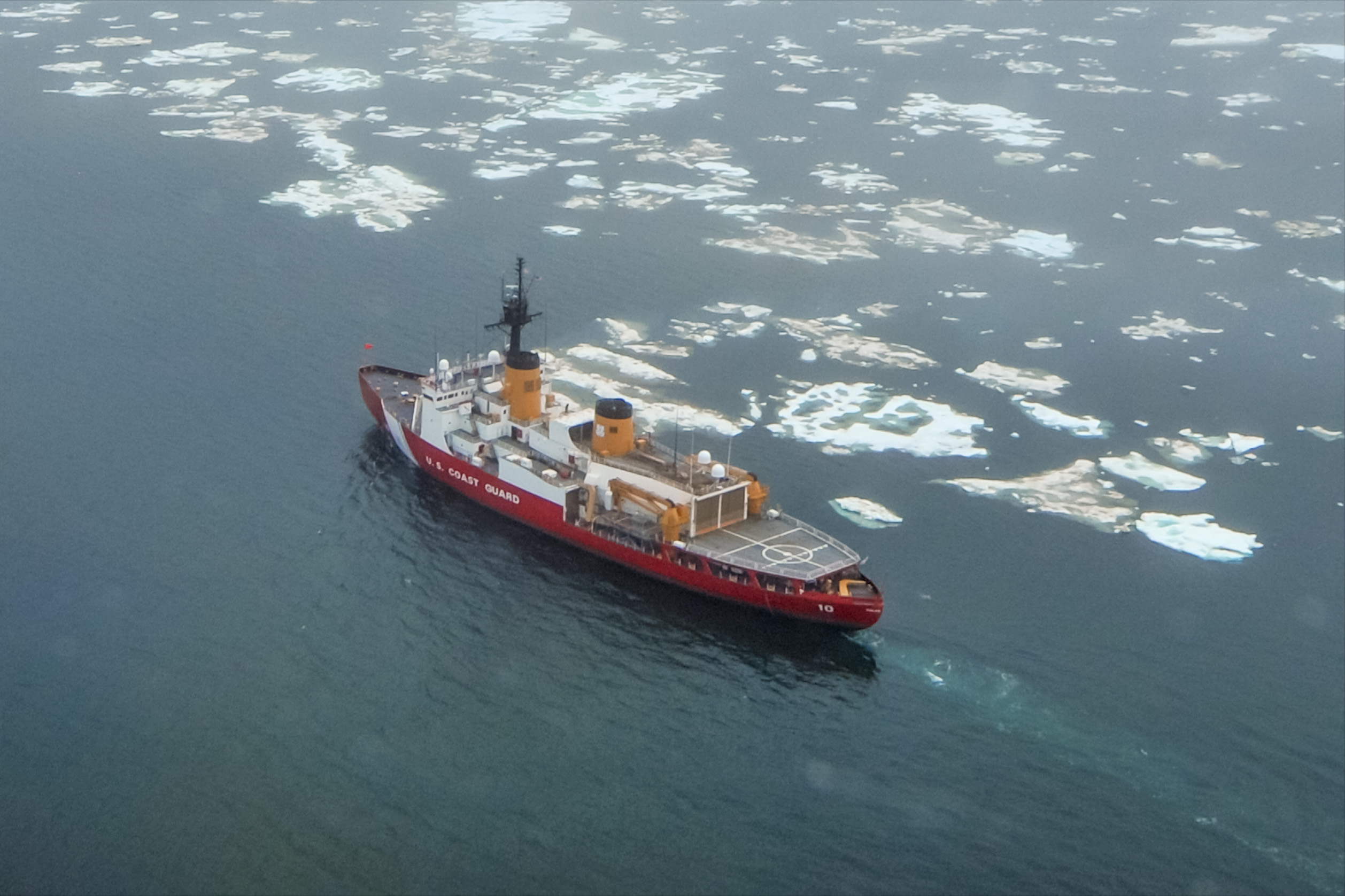U.S. lawmakers authorize six new icebreakers in defense bill
The 2021 National Defense Authorization Act authorizes up to six new icebreakers, but just three of those have received some funding so far.

The sprawling U.S. defense bill passed by Congress on Friday includes the authorization — though not funding — for six new icebreakers.
President Donald J. Trump has said he would veto the National Defense Authorization Act because of other provisions, but in that case the bill would be expected to pass early next year.
The news of the authorization of additional ships came a week after the only operational U.S. icebreaker, Polar Star, set off on its first wintertime Arctic mission in decades. Healy, the other polar-capable icebreaker in the U.S. fleet, is currently undergoing repairs after an electrical fire cut short its summer patrol in the region.
Alaska senators praised the new vessels’ inclusion in the legislation.
“The highways of the Arctic are paved by icebreakers,” Sen. Dan Sullivan, a Republican from Alaska who co-authored the provision, said in a statement. The authorization of additional polar-class vessels “will put America in a much better position to operate in the region and protect our national security and economic interests,” he said.
Sullivan first introduced a similar provision in the Senate version of the bill in 2017, but this is the first time the figure of six icebreakers has specifically been included in the bill’s final version.
“This is very good news for the nation as this decision has the potential to enhance our sovereign presence, law enforcement, naval operations, response capability and, importantly, research in polar waters,” Lawson Brigham, a resident fellow at the Wilson Center and a retired Coast Guard captain, told ArcticToday.
Although the bill doesn’t mention the significant contributions the icebreakers make to science, he said, that’s a key part of the vessels’ work.
Funding for the first heavy icebreaker in four decades was approved in 2019, and partial funding for two additional vessels has been proposed for the 2021 budget. This defense legislation authorizes three more ships, but doesn’t provide funding.
Authorizations such as this in the NDAA are usually seen as recommendations — which can be implemented, delayed or ignored by the appropriations committees who determine funding. So the legislation sets the stage for future funding from Congress for the remaining three vessels, Lawson said.
“Very likely, future appropriations for this fleet will be hard fought.”
The Coast Guard has received nearly $1.2 billion in procurement funding so far for its polar security cutter program, which fully funds the construction of the first heavy icebreaker in four decades and provides initial funding for a second vessel.
The proposed budget for 2021 requests $555 million to provide the rest of the funding for the second vessel, but that budget has not yet been approved.
The Coast Guard expects that the total cost for the first three icebreakers will be $2.6 billion.
In June, President Trump called for an accelerated expansion of the U.S. icebreaker fleet, asking agencies to consider leasing icebreakers from foreign shipbuilders. In July, Trump floated the idea of adding 10 additional vessels.
In the June memo, Trump also asked agencies to recommend at least four bases — two in the United States and two abroad, which could include partnerships with Norway, Greenland or Iceland. It’s not clear if the vessels would be home-ported at these locations.
Polar Star and Healy are currently home-ported in Seattle, and the icebreaker currently under construction will also be based there.
In a hearing last week, however, Sen. Sullivan argued that some of the new icebreakers should be based in Alaska. In response, Adm. Charles Ray, vice commandant of the Coast Guard, said that is an option under consideration.
But focusing on the Pacific Arctic “doesn’t handle America’s national interests in the European Arctic or around Greenland,” Brigham pointed out. “Coast Guard cutters could be operating with NATO forces. The bottom line is, these ships are global operators.”
Adm. Karl Schultz, Coast Guard commandant, said last year that the Coast Guard needs to expand its focus beyond Arctic Alaska to the European Arctic as well.
The new NDAA would also authorize a new Center for Arctic Security Studies with the Department of Defense, “focused on the Arctic, its infrastructure and America’s leadership in the region,” according to a statement from Sen. Lisa Murkowski, a Republican from Alaska who helped introduce the provision.
And the bill would also establish the Arctic Shipping Federal Advisory Committee, a key step in Murkowski’s plan to create an Arctic seaway development corporation.
In addition, the legislation directs the Department of Defense to study the effects of permafrost degradation on military outposts, and it authorizes funding to improve Arctic communications, including satellite capabilities.